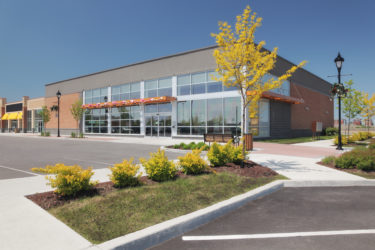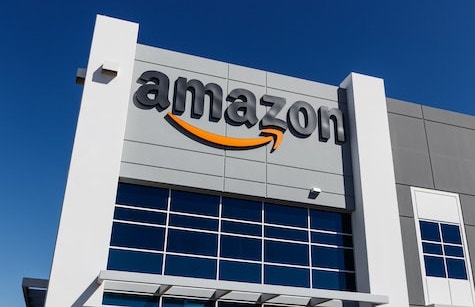Remote Work, Unemployment, & Suburban Migration: Bolstering Multifamily During the Pandemic

As downtown offices sit empty, companies are embracing solutions to continue remote work during the pandemic and potentially for the foreseeable future. Those who no longer need to commute are finding more affordable housing outside of the city, causing an influx in suburban migration. For those still tethered to the city, landlords must adjust rents for an increasing number of unemployed Americans.
What this really comes down to is that people need their homes more than ever for all aspects of their lives. The most significant aspect of this is to ensure they can continue to work remotely, and as such, multifamily apartment complexes are still supported by a wide base of renters who seek affordability.
One of my long-term clients Norman G., who is a Ph.D. and multifamily DST investor, came across a recent article that he shared with me about San Francisco rental prices dropping as tech companies embrace remote work and unemployment rises.
In the article, the popular apartment rental website Zumper tracked the median rental price for a one-bedroom apartment in San Francisco, showing an 11.8% drop year over year, from $3,720 to $3,280, beating May’s 9% drop. (Source: CNBC, San Francisco Apartment Rent Prices are Dropping Fast as Tech Companies Embrace Remote Work and Unemployment Rises, July 1, 2020)
After reading the article, Norman said it best:
It does not even discuss office buildings with 40% working from home – disaster. Space and demand are a marginal business. It cannot take 40% hit – mortgage banks will be hit hard, and the market is not reflecting this yet. Glad I am in apartments – cannot outsource that.
Although the outlook for central business districts, namely San Francisco, New York City, and Los Angeles, are bleak as they grapple with staggering unemployment rates, affordable housing in outlying suburban areas continues to be appealing. The suburbs are capturing central business district residents and offering a spacious place to live at an affordable price.
So, what is going to happen next? Are we in the process of mean-reverting to the pre-pandemic “old normal,” or are we moving into a “new normal” and a new set of challenges? It might be the latter, but these are the questions we must ask.
An Economist’s Perspective
As previous writings have suggested, I follow several leading economists, and like all experts, their opinions regularly diverge. Currently, however, they are all in agreement on the direction of our economy in the near and intermediate term, which is a rare contrarian consensus.
Chief Economic Advisor at Allianz, Mohamed El-Erian, noted in a Munk Dialogues discussion on July 22, 2020 that: “if the [COVID-19] shock lasts a long time, we may see a repeat of the Great Depression, frugal society.” Echoing this is Gary Shilling, a financial analyst, whose monthly Insight newsletter extensively dissects the economy.
Shilling recently wrote that the financial markets today, and the narrative behind the markets, correlates with the collective consciousness that emerged in November 1929 and continued through April 1930. During this period, the widely held view was that the initial shock and market drop of 48% between July and November of 1929 was the end of it, and the market was well on the road to recovery. However, by early summer of 1930, just six months later, the severity of the situation took hold and the stock market’s rally reversed course, ultimately collapsing by a total of 89% from its July 1929 peak.
I have been following Shilling since 2005. I read his latest book, The Age of Deleveraging, subscribe to the Insight newsletter, and consistently listen to his interviews. While no one can predict the future, Shilling’s words of deep reasoning and logical perception provide moments of clarity.
July 2020 Insight Newsletter Summarized
Shilling’s thoughts about the market, and the narratives that drive them, has prompted me to provide a summary of the main points of his July 2020 Insight newsletter:
- We are going to experience another major downturn in the stock market, likely starting in the third quarter of 2020, which is supported by higher and longer than expected unemployment, bankruptcies, and payment defaults with extremely high mortgage and credit card defaults and forbearances.
- The consensus had it wrong. The hopes of a V-shaped recovery will begin to fade as people wake up to the gravity of our “new normal.” This will disrupt, maybe even collapse, certain industries and the jobs and ancillary activities/transactions they create and depend upon. These industries include tourism, business travel, sporting events, entertainment, hotels, movie theaters, restaurants, and retail.
- Telecommunications and tech will continue to perform well as they power the “new normal” in particular ways. However, even these industries will likely see a pullback when the bear market rally fades, and we could see the S&P 500 down 30% to 40%.
- The economies and markets in India and Mexico will perform well. India, in particular, is filled with people well-suited in a post-COVID world, specifically IT and software engineers, who are well-positioned for the future of telecommunications and the “virtual economy.” Mexico will benefit from globalization and our shift to a more local supply chain.
- The economy is projected to turn up in the second half of 2021, and Americans, through our ingenuity, will propel the economy forward again.
The Final Point
As a long-time follower of his research, it is unusual for Shilling to make claims about his personal investments. Because of my own beliefs in the trajectory of multifamily, this particular statement from Insight resonated with me:
I’m personally invested, through limited partnerships, in apartment buildings in the Sun Belt. Pressure on incomes and desires to exit virus-ridden cities will probably continue to favor apartments in less-densely-populated areas.
I used to scoff at the adage used to validate investing in apartments, “people need a place to live.” It made me think about the issues with oversupply, vacancies (physical and economic), legal and political changes, fires, hurricanes, earthquakes, and floods (more on this in our upcoming article California Investing Risks). While insurance usually covers the latter events, vacancies and rent reductions, brought on by competition and changing market dynamics, can significantly impact a property’s performance. We have experienced this firsthand, both as reps and investors. Although, in most cases, these forces stabilize and even the worst-performing multifamily properties’ economics often balance back out. Outside of major catastrophic situations (i.e. COVID-19’s impact), multifamily properties with moderate leverage have more cushion to the downside. Preserving principal is important and multifamily real estate investments provide an excellent option because they will always be in demand. In other words, “people will always need a place to live.”
Looking Forward
In the opening to the chapter on Investment Themes in Insight, Shilling writes:
We continue to believe that the corona crisis and deep global recession are unfolding in two phases. The first, dominated by fears over the virus itself, faded somewhat as the number of new Covid-19 cases fell, hopes for a vaccine rose and investors trusted fiscal stimuli to affect a second-half economic recovery. As a result, stocks have rallied since late March. In contrast, we believe phase two will get underway as the likelihood of a deep global recession stretching into 2021 becomes more apparent, perhaps if the renewed leap in Covid-19 cases in states that reopened early persists.
I agree with Shilling in his assessment. We are entering a “new normal,” rather than rebooting the “old normal.” It is now more important than ever to choose stable, income-producing properties people will still need in the future. The reality is that we will always need a place to live, especially if our homes are also to be our places of employment.
We will continue to seek out management-free, multifamily options in the suburban Sun Belt region within a bankruptcy-remote structure, protecting investors from any personal liability. For us and our investors, this is best accomplished through the use of a Delaware Statutory Trust (DST). DSTs are 1031 qualified (see IRS Rev. Rul. 2004-86) entities that offer a unique feature: The DST is the only legal structure that provides debt replacement for 1031 exchange values, without the investor being a party to the loan. DST multifamily properties are often financed at interest rates from Fannie and Freddie that are below what other structures or individuals can obtain on their own. For these reasons, and in this expert’s opinion, DSTs are the simplest and most efficient structure for investing in management-free, income properties.
We are happy to share our insights and recommendations as you consider your options. Contact us to speak to one of our partners today.










